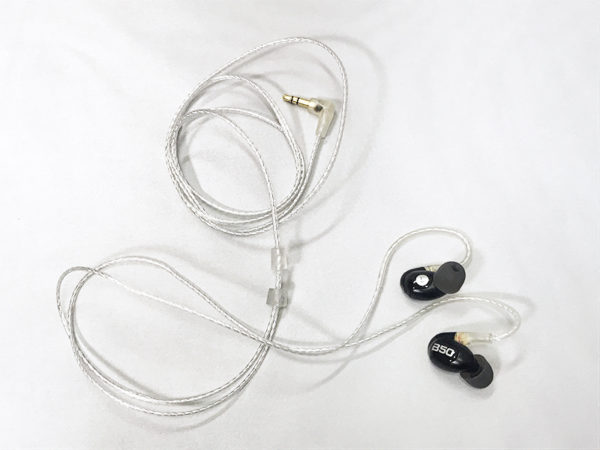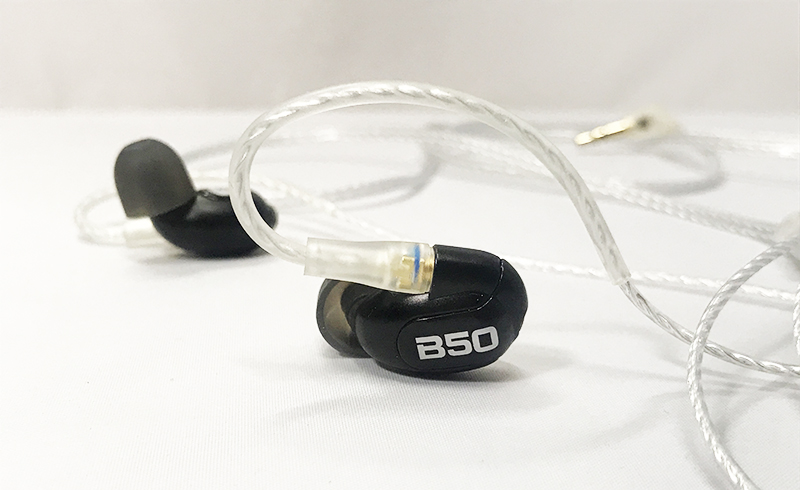This week, I was lucky enough to have the opportunity to check out the newest from Westone, the Westone B50! I am a big fan of Westone’s W-Series, so I was super curious to try out this new flavor of Westone. But does this pick from the B-Series hold up to my high expectations? Let’s take a closer look with this Westone B50 Review!
Warm and Fat – Westone B50 Review
In the Box
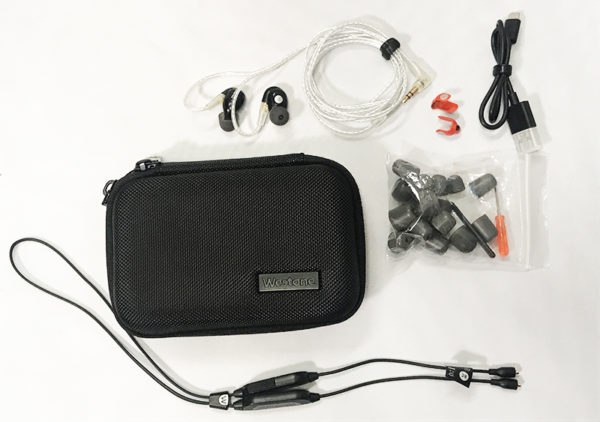
-Westone B50 iems
-detachable silver MMCX cable
-detachable Bluetooth cable
-micro USB charging cable
-5 pairs of silicone eartips
-5 pairs of foam eartips
-exchangeable metal faceplates
-zipping protective carrying case
-documentation
Design
Look and Feel
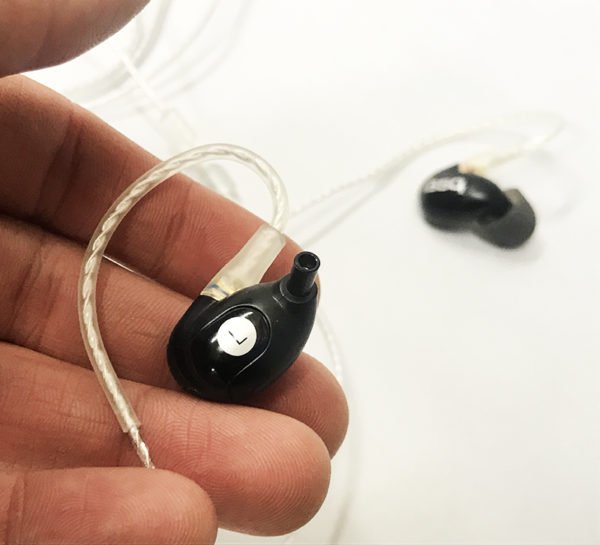
The driver housings of the Westone B50 has a very similar look to the Westone W Series. It’s a small-medium housing size which works well for folks with large ears and small ears alike. The look of the housing is simple and utilitarian, sporting just the “B50” model logo. However its looks are also a bit customizable. The B50 comes with black faceplates and orange faceplates, which are swappable.
Additionally, the faceplates of the Westone B50 are made of metal. By contrast, the housing itself its made of a strong plastic. Despite its compact, manageable blueprint, the build of the Westone B50 feels rugged and durable.
Comfort and Fit
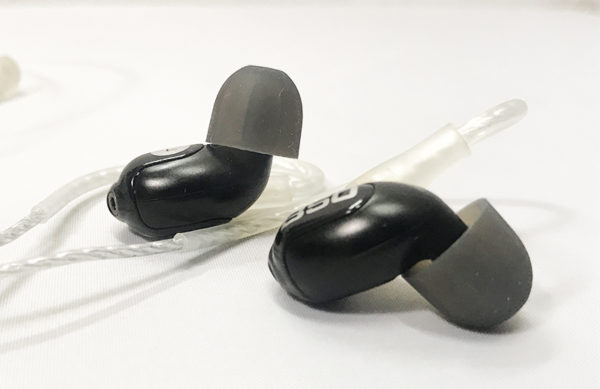
The fit of the Westone B50 worked remarkably well with my relatively small ears! I found a tight seal almost immediately. The IEMs stayed in place effortlessly. Admittedly, I had the same wonderful fit with the well-known Westone W-Series. Therefore, if you’ve tried those and had an easy time fitting them in your ears, the B50 will be no exception.
In addition to its easy fit, the Westone B50 is also remarkably comfortable. It was easy to forget they were even in my ears at all. Because the housing size is so compact, it doesn’t touch any other parts of my ear. It has a long nozzle, so its strongest method of contact is inside the ear via the eartips.
Additionally, the cable of the Westone B50 has a tight, molded ear hook. This hook helps to keep the B50 securely in place. They contributed greatly to the B50’s remarkable fit, as well as their comfort overall.
Cable
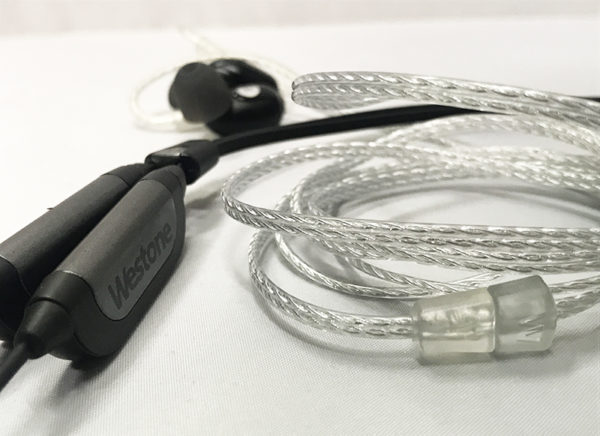
The Westone B50 comes with two cables: a wired, silver-plated MMCX cable and the Westone Bluetooth cable.
Firstly, the wired, silver-plated cable of the Westone B50 is a thin structure, coated in a clear, somewhat stiff jacket. As a result, it resists tangles and is also easy to coil and manage. Additionally, the conductors of the left and right channels are individually insulated from each other. They are not braided together, but rather run alongside next to each other.
Secondly, the Westone Bluetooth cable included with the Westone B50 has a flat design. Onboard is a microphone/remote as well as a battery pack which is chargeable via the micro USB cable which is included in the box. This cable is the first version of the Bluetooth cable. As a result, it connections wirelessly via Bluetooth 4.0 with CSR8645 chipset. Additionally, it has 8 hours of battery life and a quick charging feature. Lastly, it is water/sweat resistant with an IPX4 rating.
Drivers
The Westone B50 features 5 balanced armature drivers. The frequencies are split among them via a 3-way passive crossover. I don’t have much information yet regarding other design features of the driver setup, but will update this section once Westone releases more information about the B50.
Sound
Low Frequencies
The low frequencies of the Westone B50 are punchy, yet exude a feeling of warmth. As a result, they are able to provide low frequency rich instruments with proper emotional impact alongside a sense of aesthetic, thick gooey-ness.
Additionally, the sub-frequencies have emphasis around what sounds like 40Hz. As a result, mixes that utilize sub frequencies for emotional impact come through with a underlying foundation of power.
For example, when I was listening with the Westone B50 to the song Humble by Kendrick Lamar, the kick drum had punch and groove. It contrasted with the warm, low, sub synth underneath it. This sound characteristic contributed to the overall dark, authoritative strength of the lyrics and chordal structure of the song.
Middle Frequencies
The midrange of the Westone B50 is harmonically complex with an interesting combination of quickness and warmth. While the mids feel thick and full, they respond to transients quickly. The cable has a low noise floor it seems. As a result, one can hear the full sustain of transients as needed for emotional impact and detail.
However, the shape of the frequency response leans away from the high-mids. Rather, the Westone B50 has emphasis in the low-mids around what sounds like 300Hz. It has an even sounding middle midrange, providing harmonic fullness to midrange rich instruments like guitars, strings, pianos, and horns. A wide, light cut in the high-mids lets vocals mix in with the song in a musical, natural-sounding way. However, it also made me want to turn the volume up a bit to get the amount of emphasis there that I typically want.
For example, when I was listening with the Westone B50 to the song Pacifist’s Lament by Ani DiFranco, the bass guitar felt full, warm, and louder in the mix than usual. Additionally, the guitars, horns, reverbs, strings, and keys felt harmonically complex and natural. Their energies leaned away from the high-mids, but rather toward their sense of fullness.
Lastly, Ani’s vocal sat slightly backward in the mix than usual. It’s overall sound characteristic still sounded realistic and smooth, but just quieter in the mix. As a result, I found myself resisting the urge to turn the volume up in order to hear the vocal in the way I would have liked it to sit.
High Frequencies
The high frequencies of the Westone B50 have a sense of emphasis in the upper treble and upper octave. I hear the emphasis in a couple places, one around what sounded like 8 kHz and one around 10-12kHz. These boosts feel like they have a wide Q, and thus maintain a feeling of naturalness. As a result, the highs have a profound sense of separation from the midrange. They have wonderful detail and harmonic complexity, but lean toward those upper regions, so has to provide extra textural feeling and audible air.
For example, when I was listening with the Westone B50 to the song Stuff by Miles Davis, the cymbals felt texturally realistic and harmonically rich. I could clearly hear the differing characters of each cymbal individually. Additionally, these cymbals had a wonderful sense of separation from the horns.
I was impressed by the detail of the high-hat’s open-closed pattern, because it felt clearer and had a full sustain. Additionally, no part of the horns or drums felt harsh at all, but maintained naturalness in their presentation.
Soundstage
The soundstage of the Westone B50 has nuance and spaciousness. And while its realism is skewed slightly because of the shape of the frequency response, it seems to still follow the general spacial placements of the mixer’s intentions.
The biggest skew in the realism of the soundstage comes from the wide, high-mid cut. It affects both the sense of height and the sense of depth. For example, intimage instruments with high-mid energy, like vocals and horns, tend to sit a bit further back in space than usual. Likewise, those types of instruments tend to sit a little bit lower in the soundstage than usual because their low-mid and middle-mid energies and louder and weigh them closer to the ground. However, the feeling of width remains as it usually is, and has the nuance and realism to maintain the mixing and mastering intentions.
For example, when I was listening with the Westone B50 to the song I F by Lafemmebear, her vocal sits a bit further away than usual. Additionally, her voice sits a little less high in the vertical domain. That said, the expansive width of the background vocals have wonderful contrast from the strong phantom center of the vocal. Additionally, the intimacy that exists in the vocal contrasts strongly from the far-off arpeggiating synth. There is nuance between each dimension’s extremes and it feels both natural and spacious in its presentation. Nothing is overly expansive, but it has separation and nuance which translates directly to emotional impact for mixes that utilize changes in soundstage to change the feeling among sections of the song.
Overview
Overall, the Westone B50 has a strong low-end and a sense of thick warmth. It works well for a wide variety of genres because of its harmonic complexity. However, it works best for pop, rock, hip-hop, and electronic music because of its sub frequency emphasis and its lack of high-mid forwardness.
Additionally, the Westone B50 fits in a wide variety of ear shapes and sizes and is comfortable!
The Westone B50 is available for the best price here:
